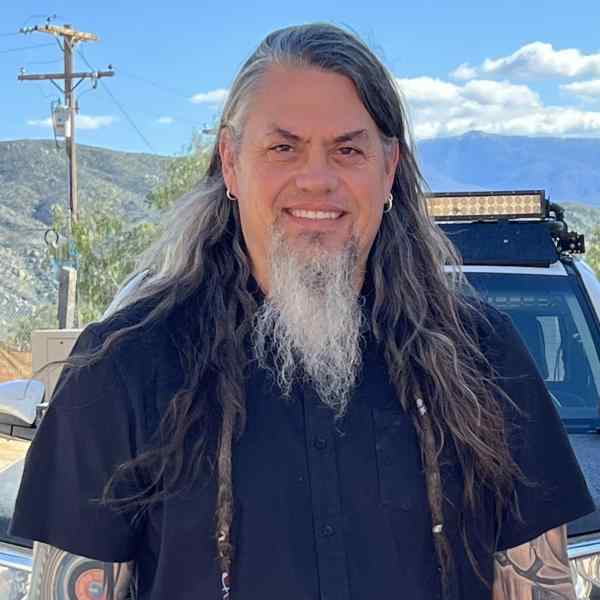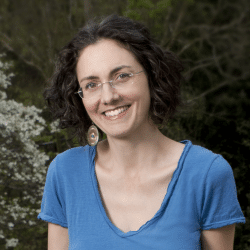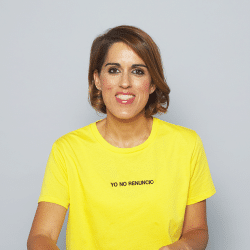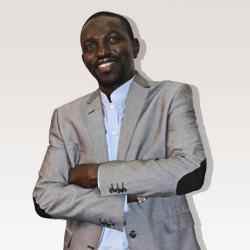Introduction
Matthew Rantanen is partnering with Tribes to solve the problem of broadband access and affordability in Indian country, which is one of the barriers that has kept tribes from fully participating in the 21st century economy. This requires the hard-earned trust of Tribes as well as policymakers, and a new vision for the architecture of the internet overall.
The New Idea
Matthew Rantanen is spearheading a massive leap forward for infrastructure on American Indian land. Starting in California, Matthew spent years earning the trust of all 109 tribes and cultivating a deep understanding of the unique barriers that have kept tribal nations largely “disconnected” in the 21st century. While building the first Tribal consortium owned and operated broadband infrastructure in the U.S.– an innovative model that has since prompted ambitious projects throughout the country and abroad – Matthew was developing his new model and vision for the internet. The old model entails every house being wired to a national grid that doesn’t extend to many rural places and is controlled by a few private providers. Instead, Matthew is building a national network of Tribal infrastructure builders locally managing their own networks, focused on seamless, inclusive connectivity and the protection and privacy of their users. In this new model Tribes build out broadband that would eventually provide ubiquitous coverage in the community to access the Internet, which allows you to keep up with online learning, remote work opportunities, or access to telemedicine. Internet access could seamlessly reach you and your devices wherever you are, as you move from place to place throughout the community, only faster and more secure.
Matthew has also been part of the major decisions and policy developments for the last two plus decades, when it comes to Tribal connectivity. He's already proven, against all odds, that various technical approaches, including cutting-edge wireless connectivity along with fiber-optic backhaul, can transform the internet as we know it and increase digital engagement for the “disconnected.” In line with this vision, he’s shaped regulatory framework that could expand the spectrum available to Tribes and oversee this new space helping around 400 tribes get licenses to operate in this new licensed wireless spectrum. Meanwhile, more than 3 billion dollars – much of them as part of Covid-inspired stimulus funds focused on connectivity– have been earmarked for Tribal nations.
Now, Matthew is building up the network of expertise and capacity to ensure that Tribes can seize this moment of opportunity. The core of his strategy is growing a cooperative network of Tribal technologists who over the next decade will ensure that Tribal lands have the most sophisticated self-managed and decentralized broadband infrastructure in the country, while expanding digital literacy within their communities in the process.
Tribally owned and managed broadband networks represent a major step toward disrupting generations of oppression, control, and isolation -- and a powerful economic development tool for tribes to boot.
The Problem
A majority of American Indian and Alaska Native people live in rural areas, and 68% live on or near their tribal homelands.1 Rural Native communities suffer some of the highest poverty rates in the nation, tend to have lower educational attainment and employment rates, and lower household incomes when compared to Native Americans who live in metropolitan areas or in counties with no tribal lands. One of the key barriers these communities face is a lack of broadband – high-speed, always-on Internet access —which has become critical for modern life. A report from the American Indian Policy Institute in 2019 found that 18 percent of those living on or near Tribal reservations have no Internet access, compared with around four percent of people living in non-tribal areas. And even where it’s technically available, many households can’t afford broadband, which is prohibitively expensive in Tribal communities. A lack of broadband excludes Tribes from participating in normal activities expected of individuals, students, entrepreneurs, and governments in society today. Educational and employment growth is stunted, robust telehealth is a pipe dream, and young people leave home in search of opportunities elsewhere.
The lack of broadband access for tribal and rural communities is due in large part to the way telecommunication systems were originally built and continue to be incentivized. In the late 90s, the seven private companies in the US that laid the overwhelming majority of fiber networks upon which our current grid is built were competing for a greater market share, with success determined by how many feet of cable they could lay per day. Anything that slowed them down - rivers, mountains, Tribal nations - was avoided. As a result, today there are 8,000 “missing middle-miles of fiber” needed to connect Tribal and rural communities in the lower 48 states to the rest of the Internet.
The unique circumstance of Tribal communities’ lack of digital inclusion of course stems from their wider experience of exploitation and subjection in the United States. For starters, the fraught relationship between federally recognized Tribes and the U.S. Federal government stipulates that, if Natives live in their designated reservations, the government will provide basic utilities and resources. In the U.S., however, Internet providers are private enterprises, and despite decades of federal incentive programs, none have led to equitable connectivity for Tribal reservations. In part this is because the incentives were for existing telecom companies, and, for reasons noted previously, very few made investments in Indian Country in the first place.
The negative outcomes associated with a lack of connectivity worsened during the COVID-19 pandemic, when tribal nations suffered extreme losses of life, work and learning. While adverse outcomes for Tribal nations pre-dated the pandemic, it brought the digital divide into clearer focus and prompted unprecedented federal support for rural and Tribal broadband infrastructure. While the amount of funding is only 1/4 of what is needed, it is the largest amount ever directed at tribal broadband and importantly, the money is flowing directly to the Tribes without being passed through state governments.
With the unprecedented flow of funds available to build networks in Indian Country, many external businesses and consultants are lining up to get contracts. But for decades, Tribes have been ignored and defrauded by telecommunication companies. Many Tribal leaders have concluded they need to build their own networks to ensure high-quality Internet access and to secure many of the modern benefits that many Americans take for granted.
However, the lack of Internet access to date and resulting “brain drain” of youth who leave the reservation in search of opportunity elsewhere has resulted in a dearth of Tribal expertise and general digital literacy. Tribes need hardware technicians familiar with the ins and outs of running an Internet service provider. They need technologist leadership and expertise to design a coherent strategy that protects Tribal members against the data theft and surveillance that undergirds the dominant business model for the entire Internet—despite the ways this exportation defies accountability and is in violation of treaty rights. Tribal nations should be able to assert the rights of their own citizens, not just to access the internet, but to own and manage data as they, too, increasingly move their lives online.
The Strategy
In 2021, Matthew initiated the first Tribal Broadband Bootcamp, which serves as a comprehensive digital empowerment program for Indigenous people, offering a holistic approach to learning how to build and maintain broadband networks. Partnering with network experts such as Google, the Internet Society, AMERIND Critical Infrastructure, Institute for Local Self Reliance and universities across the country, the program provides participants with a diverse curriculum suited for all levels of expertise. The in-person training covers a wide range of topics, including not just the key technical aspects of this work but also business development strategies and digital equity frameworks. All material is presented in a straight forward manner, ensuring easy understanding, especially for those encountering the information for the first time. Participants also get hands-on experience building their own networks and troubleshooting problems together. To maximize accessibility, the sessions are recorded for widespread dissemination, building a growing library of Tribally owned and managed knowledge.
To date, Matthew and his team have organized numerous digital empowerment programs, engaging 500 members from over 65 tribes across the U.S. To Matthew’s initial surprise, the majority of participants, even those well-versed in technical aspects, keep coming back. They report finding value in each in-person experience, and continually build upon their existing knowledge. With the presence of many experts, learners have evolved into teachers, capable of training and mentoring community members in their respective Tribes. This cultivation of Tribal technologists is essential in driving broadband access infrastructure development and digital literacy within their own communities. Before returning home, participants are added to the Tribal Broadband discussion forum, providing a 24/7 online communication platform for all attendees. The platform enables Tribal broadband network builder members across the U.S. to partner, collaborate, and troubleshoot technical issues. Such intertribal cooperation among community members is rare, as close collaboration between Tribes often occurs primarily at the leadership level. These interactions foster lasting relationships and establish the resilient groundwork for a national Tribal infrastructure that addresses the pervasive issues of digital exclusion and enables Tribes' self-determination in their pursuit of full digital participation.
The traditional construction of the internet in the U.S. entails connecting community grids to individual homes, schools, and hospitals. Due to the lack of fiber-optic cables in rural areas, Tribal broadband initiatives need access to wireless technology and a new model for the architecture of the internet. In today's world, people interact with digital space while on the move. This is made possible by P2MP (point-to-multipoint) networks – a communication architecture involving data transmission from a single source (similar to a cell tower) to multiple devices simultaneously (such as mobile devices, and fixed endpoints, like homes) via a more powerful wavelength (called 2.5 GHz). In the U.S., transmitting along a 2.5 GHz wavelength requires a license from the Federal Communications Commission (FCC) -- those with a license have unobstructed communication on their available “channels,” making the value proposition that much greater. Historically, these licenses have been acquired by private entities and have not been made available to Tribes, further limiting tribal connectivity. In 2020, Matthew led a federal effort to procure licenses for Tribes. The objective was to provide Native communities with the necessary licenses to build robust P2MP networks and improve wireless connectivity on reservations and in the surrounding rural areas. The FCC expected to receive 12 applications, but thanks to Matthew’s trusted outreach and coordination, they received over 500. To date, over 400 tribal licenses have successfully been obtained for 2.5 GHz bandwidth licenses, enabling them to establish their own P2MP architecture and self-provisioned networks. However, these licenses are subject to a "use it or lose it" clause under current regulations. This previously meant that tribes had a limited 24-month window to initiate their operations. As license holders pushed back on the FCC, they extended the first deadline of deployment to 48 months, and the second at 96 months. To address the original urgent constraints, Matthew initiated P2MP setup training as part of his digital empowerment programs and invited Tribes who had acquired licenses. Through hands-on training, participants gain the knowledge and skills needed to set up and sustain the infrastructure. They are also given transmitters to take home with them, so that they can begin operating (and thus preserve) their 2.5 GHz license. Thanks to the Tribal Broadband communication platform, participants can access 24/7 support with technical issues from the growing national network of tribal members and experts.
In addition to the basic services, exchange and participation that broadband access enables, Tribally owned infrastructure can also serve as an economic development tool for Tribes and help increase youth retention by creating professional opportunities that will be applicable on and off the reservation (Tribal technologist/engineer/solar installation/etc).
Matthew’s work is already ushering in transformative opportunities in Indian country. A 2.5 GHz network can enable precision agriculture, wildfire monitoring in remote wilderness areas of California Tribal land or help Alaskan Tribes collaborate to set up telehealth solutions. These are real projects in development - the latter supported by a $6.5M federal grant. But beyond specific examples, these training programs and rapidly expanding network of peers will dramatically increase digital literacy and unprecedented intertribal cooperation. Because of aforementioned barriers to connectivity, too many Indigenous people see themselves as consumers, not owners and operators, of technology. This shift toward collective agency is palpable, especially for young people who are beginning to see a future for themselves in Indian country.
In 2023, Matthew founded a non-profit called Waskawiwin as the primary vehicle for his work, and the means of increasing the number of digital engagement programs that he and his growing team are able to implement each year. In five years, Matthew wants half of the ~ 574 federally recognized Tribes in the U.S. to be building and running successful broadband communications. In 10 years, he wants every Tribe in the U.S. connected to broadband and managing those assets on reservation in ways that serve their communities, whether through their own internet service providers or through managed outside vendors. Either way, Matthew sees the ownership of these assets as critical to increasing outcomes for Indigenous communities and enabling Tribal participation in a 21st century economy.
The Person
Matthew is a descendant of the Cree Nation, his family moved into Northern Idaho over one and a quarter centuries ago, from what is now Alberta, Canada. They moved to the U.S. 130 years ago to escape oppression and find opportunity. Matthew grew up around the reservations of Eastern Washington and North Idaho.
From a young age, Matthew loved envisioning and creating things and had a knack for cultivating vibrant social networks despite the fact that his family moved often. He went into graphic design and tech work in Silicon Valley after college. During the dot com crash, what felt like the end was just a new beginning. Matt began working alongside Tribes throughout California on their digital footprint, gaining a deep understanding of the cultures and customs of Tribes in that region and the many barriers that they still face in this country.
Matthew has been part of most every national conversation and policy battle on the topic of Tribal Broadband for the past 20 years (earning him the nickname of “cyber warrior” for Tribal broadband).
Apart from technical expertise, Matthew’s success relies on the hard-won trust he has cultivated among Tribal leaders and key policymakers, and his ability to build consensus among diverse groups and seemingly dissonant interests. He is just as comfortable walking the halls of federal buildings as he is climbing onto a roof to install an antenna in Indian country. In all of his roles, Matthew is a deep listener and a bridge-builder, whose expertise on complex issues of connectivity and his ability to effect real change among Tribes and federal and state agencies is rare.
Matthew continues to advise on federal and state policy and participates in decision-making bodies at all levels of government and industry, including a project that will build upon the 650+ middle-mile network, bringing an additional 10,000 miles of fiber to serve all of the 109 Tribes in California. His acclaim in the field has yielded him many esteemed job offers, including two from the White House, but Matthew knows where his value is, and believes he can be most effective as a bridge-builder working to build consensus from the outside-in.




